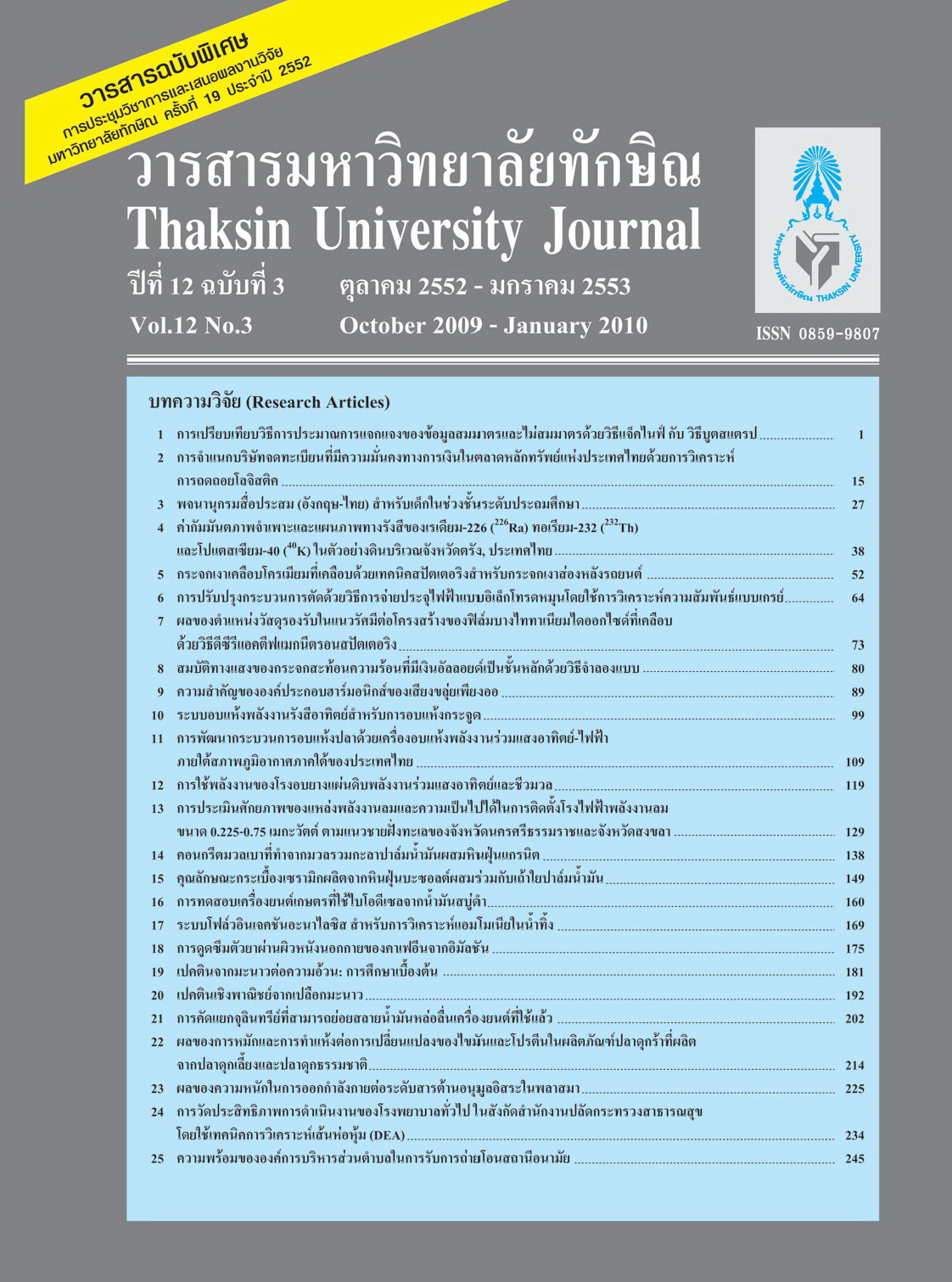คุณลักษณะกระเบื้องเซรามิกผลิตจากหินฝุ่นบะซอลต์ผสมร่วมกับเถ้าใยปาล์มน้ำมัน
Main Article Content
Abstract
การวิจัยนี้เน้นถึงความเป็นไปได้ในการนำผงหินบะซอลต์เหมืองหินกลับมาใช้ใหม่ผสมกับเถ้าใยปาล์มน้ำมัน บดทำเป็นกระเบื้องเซรามิก ได้วิเคราะห์ทางเคมีและวิทยาแร่ด้วยเทคนิคการเรืองแสงรังสีเอกซ์และการเลี้ยวเบนรังสี เอกซ์ตามลำดับ ยังได้ศึกษาโครงสร้างจุลภาคด้วยกล้องจุลทรรศน์อิเล็กตรอนแบบส่องกราดของกระเบื้องที่เลือก แผ่น ตัวอย่างปรุงขึ้นจากสี่ตำรับ แต่ละตำรับประกอบด้วยเถ้าใยปาล์มน้ำมันเพิ่มขึ้นจากร้อยละ 0 ถึง 30 อุณหภูมิเผาที่ 1100, 1180 และ 1200 องศาเซลเซียส ด้วยอัตรา 5 องศาเซลเซียสต่อนาที และคงไว้ 30 นาที ได้วิเคราะห์สมบัติงานเผาได้แก่ ความหนาแน่นรวม การดูดซึมน้ำ การหดตัวหลังเผา น้ำหนักสูญหาย ความแข็ง กำลังดัด และความสวยรูปแผ่น สมบัติ หลังเผาของแผ่นตัวอย่าง ได้แก่ การดูดซึมน้ำและกำลังดัดได้ตามเกณฑ์มาตรฐานไทย (มอก. 37-2529) นอกจากนี้ผล วิเคราะห์วัฎภาคโครงสร้างด้วยการเลี้ยวเบนรังสีเอกซ์พบแอนไฮไดรต์ คริสโทบาไลต์ ควอตซ์ อะเคอร์มาไนต์ โวลลาสโทไนต์ และไดออปไซด์ ผลการศึกษาระบุว่าตำรับหินฝุ่นบะซอลต์ร้อยละ 80-70 ผสมเถ้าใยปาล์มน้ำมันร้อยละ 20-30 เผาที่อุณหภูมิ 1200 องศาเซลเซียส แสดงสมบัติเซรามิกเหมาะสมที่สุดอยู่ในเกณฑ์ มอก. สำหรับการทำกระเบื้อง ปูพื้น
The investigation focused on the recycling feasibility of basalt quarry dust (BQD) combined with ground oil palm fiber ash (GOPFA) and ceramic tiles making. Chemical and mineralogical analyses were carried out using X-ray fluorescence and X-ray diffraction (XRD) techniques, respectively. Ceramic tile bodies were made from four suggested batches. The contained GOPFA were increased from 0 to 30%. Firing temperatures were selected at 1100, 1180 and 1200 ํC with heating rate of 5 ํC/min and soaking for 30 min. The bulk density, water absorption, firing shrinkage, weight loss, micro hardness, flexural strength and aesthetical properties were analyzed. The fired specimens were characterized with respect to the Thai standard specification (TIS 37-1986) on water absorption and flexural strength. Furthermore, the phases characterization by XRD were found the anhydrite, cristobalite, quartz, akermanite, wollastonite and diopside phases. The result of study indicated that the batch containing 80-70% BQD and 20-30% GOPFA fired at 1200 ํC exhibited the most satisfying ceramic properties that meet the TIS requirements for making floor tiles.


